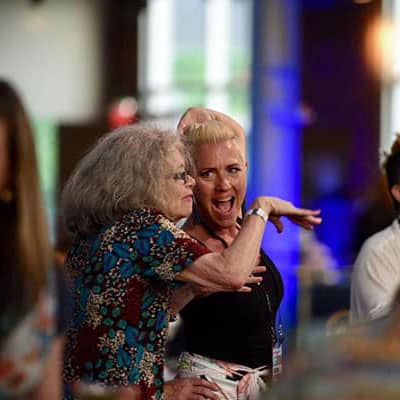Guest Post: Art at the Center of Civic Planning
July 10, 2018 • 2 minute read
Artists are used to dancing in the complexity. We like to make something where nothing exists; to explore new language around a struggle; to listen profoundly; to create new ways to see the world. Why not put artists in problem-solving roles?
By Krys Holmes
The Myrna Loy (NPN Partner, LANE Alpha Cohort)
Helena, Mont. In this torn-apart world the one thing we all share is that everybody lives somewhere. Under a bridge, on a mountaintop, down the street from Grandma’s house—we all claim some place, in some way, as our own.
Celebrating our human connective tissue through place is one way communities are solving their most intractable problems. I spent three days in May at the ArtPlace America 2018 Annual Summit, a convening of more than 300 people engaged in creative placemaking. I learned about how artists, city planners, police chiefs, tribes, and social organizers are exploring new ways to transform communities through art.
Creative placemaking puts artists in the center of civic planning to help solve complex problems: transportation issues, public safety, inequities, land-use conflicts, neighborhood disputes. It was exciting to be around people developing best practices for this new field that is so different from arts presenting and curating.
Artists are used to dancing in the complexity. We like to make something where nothing exists; to explore new language around a struggle; to listen profoundly; to create new ways to see the world. Why not put artists in problem-solving roles?

America loves to put art in service to something else (STEM education, brain function, physical therapy…) What intrigues me about creative placemaking is what I loved about Church growing up: it facilitates communities sticking it out together because they believe in something bigger than their individual selves. I think this work—creating connectedness that is grounded in a place—is critical to healthy society. Only with creative placemaking it’s art, rather than religion, that is the gateway to transformation.
We all know the power of art to create change. Placemaking gains traction is shifting the spotlight away from the artist, to focus on connectedness. Community. Relationship. The art doesn’t have to be epic; the experience doesn’t have to be spectacular. But the relationship has to be authentic and enduring.
The field is only 10 years old, but there are plenty of resources and tools already in place: from ArtPlace America, Policy Link, Springboard for the Arts, the Kresge Foundation, the Orton Foundation and Alternate ROOTS just to name a few.
In a nation so painfully factious, using our creative superpowers to build community around a city block, a river, a wall, a highway, or a town seems like powerful peacemaking.
About Krys Holmes
Holmes has been a writer, musician, non-profit administrator, interpretive historian, and (for one winter) a marten trapper in the Talkeetna Mountains of Alaska. She has organized book festivals and literary events; arranged music for choral and jazz performance; presented at international fisheries conferences; and is the author of the award-winning history book, “Montana: Stories of the Land.” She is the Executive Director of the Myrna Loy, a vibrant cultural hub in Helena, Montana.
Photos courtesy of ArtPlace and Lydia Brewer Photography.